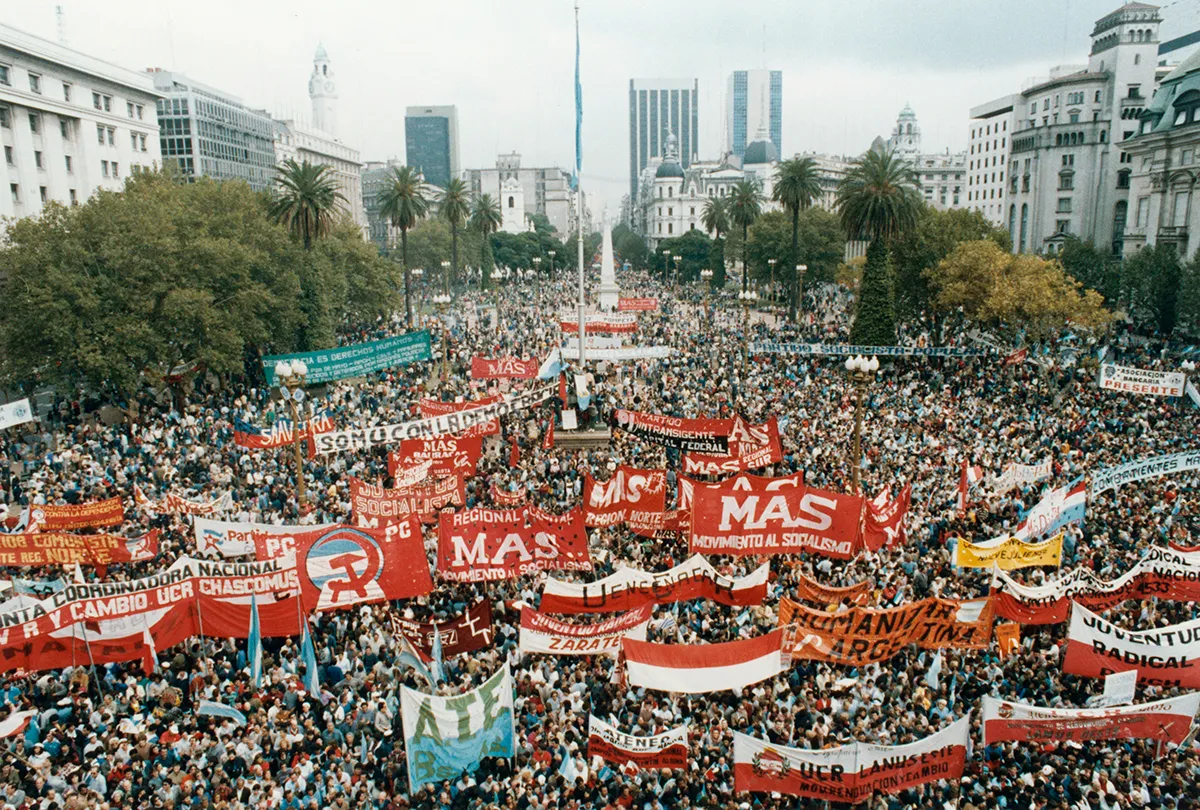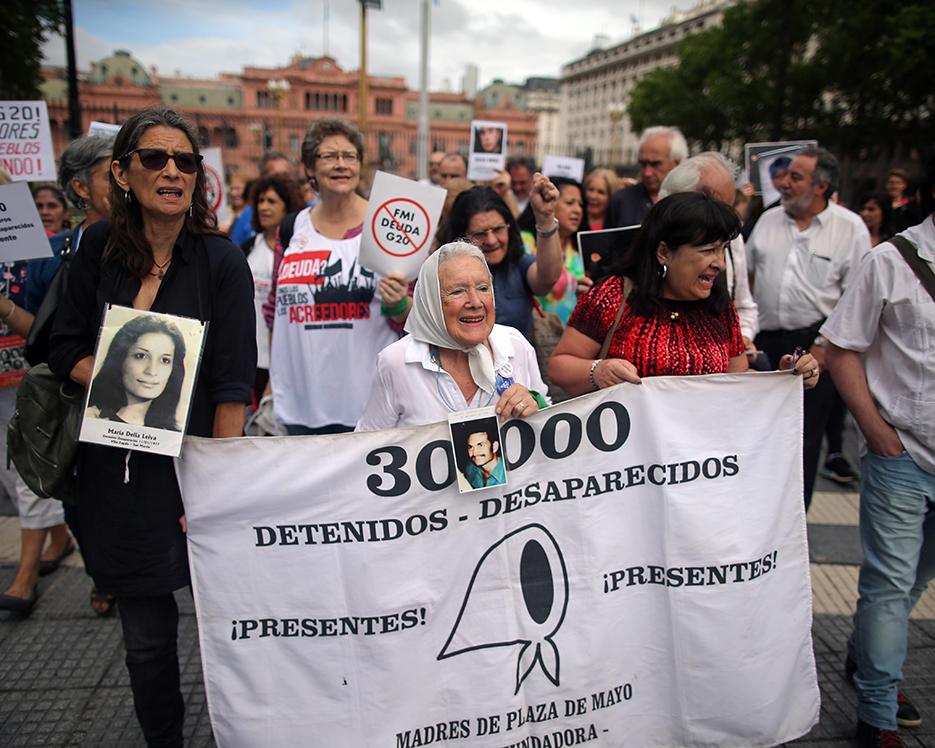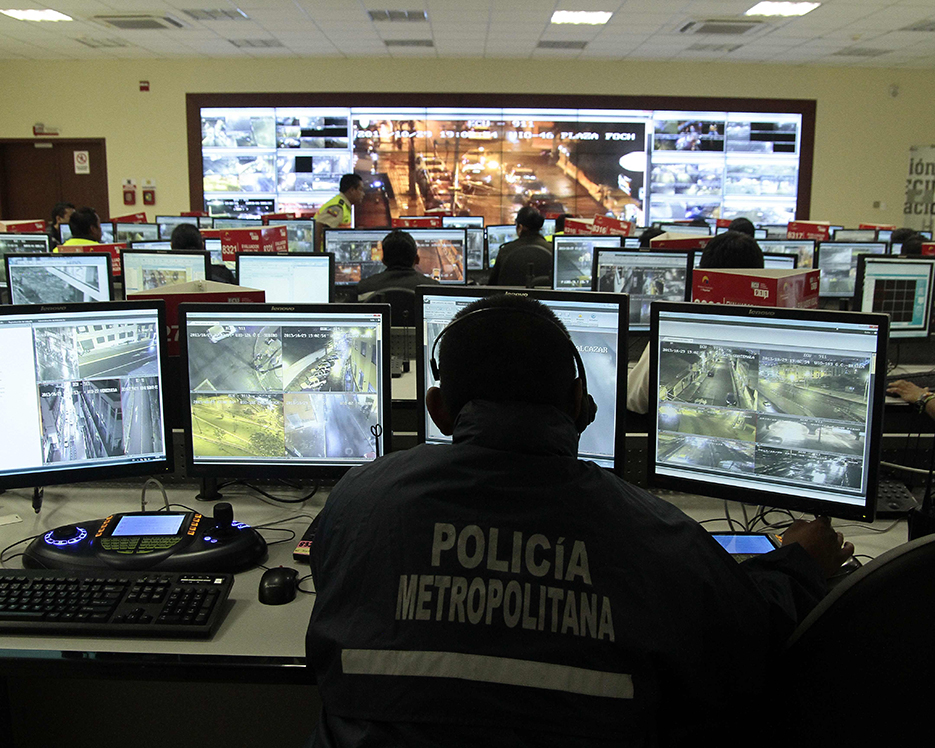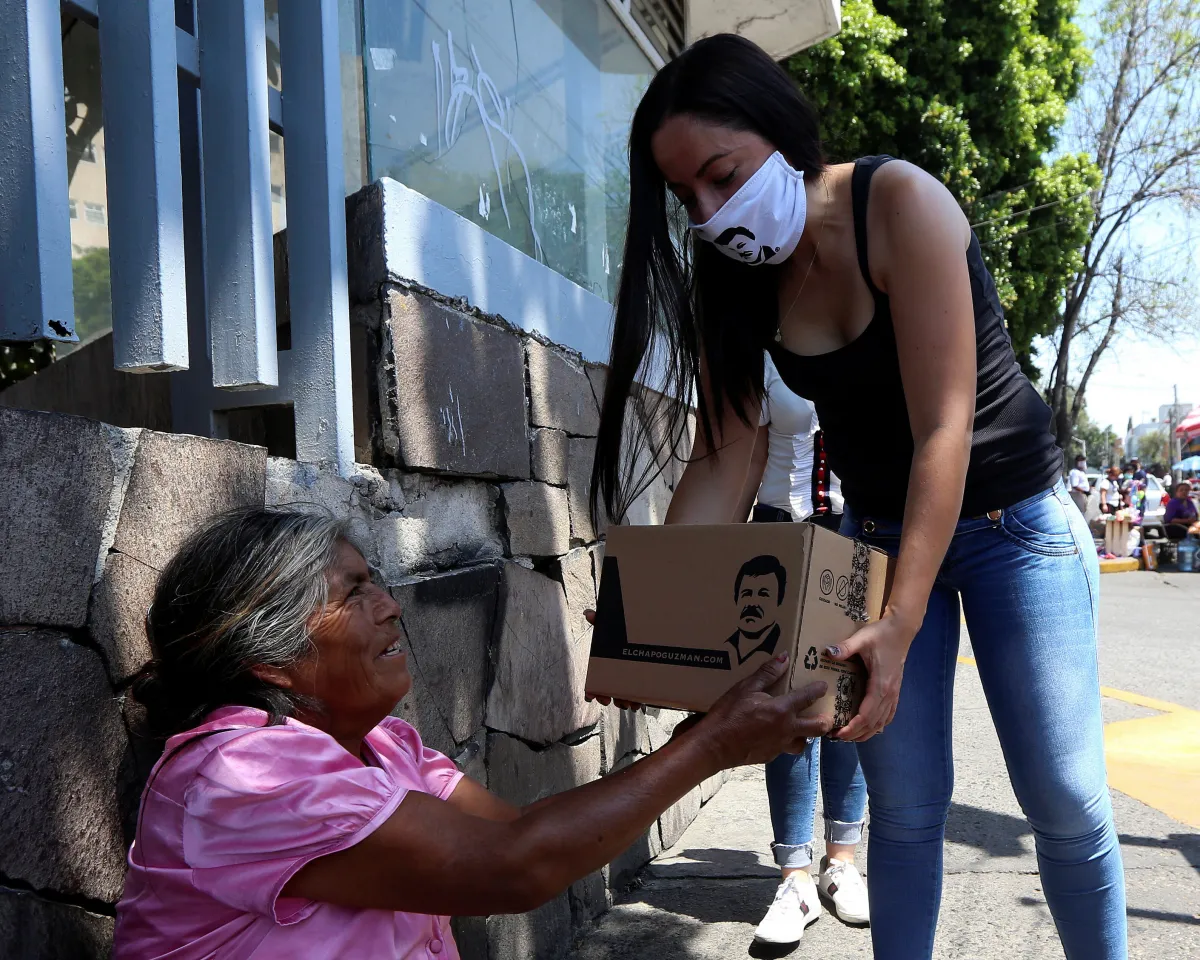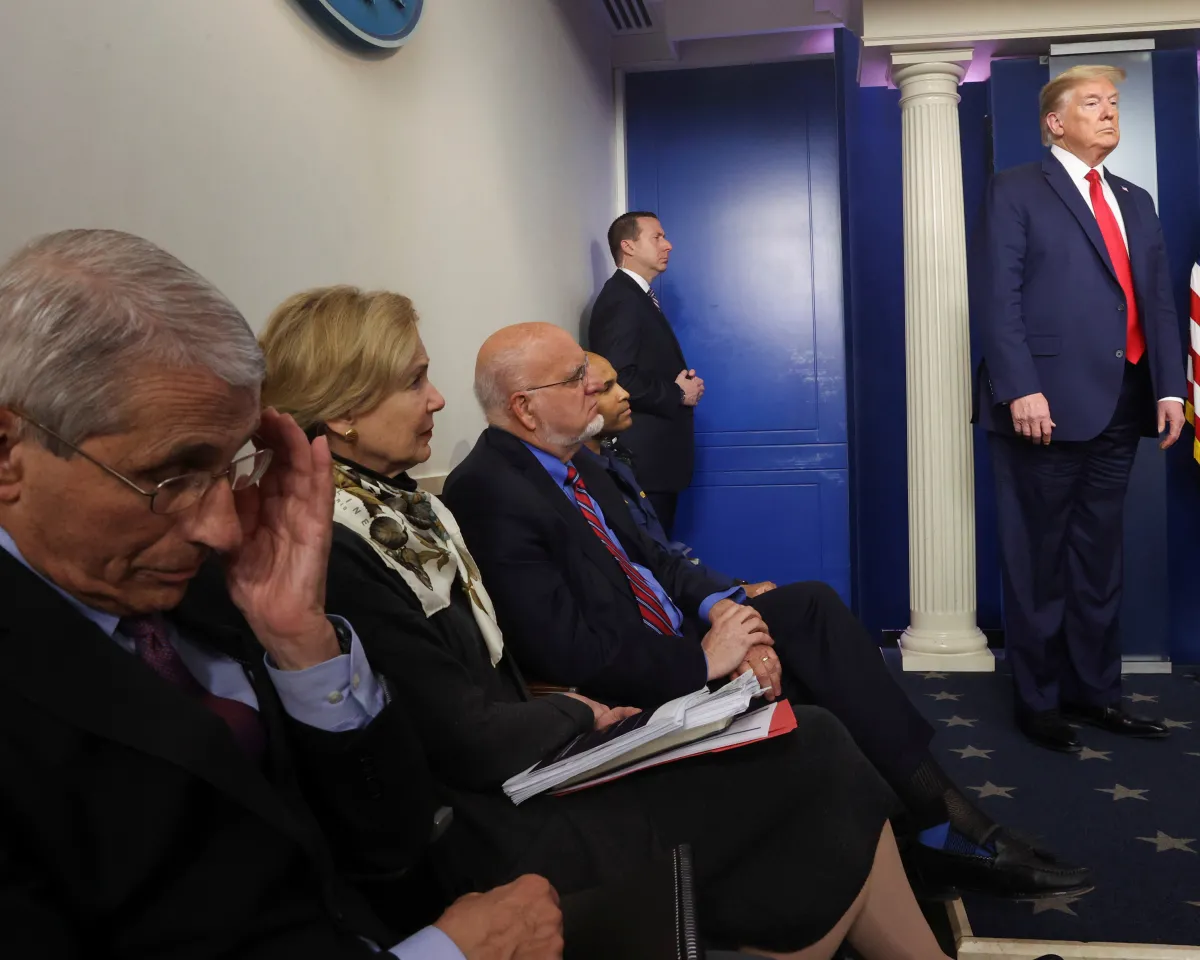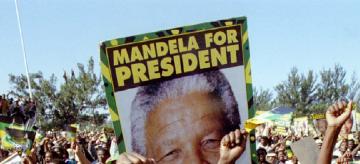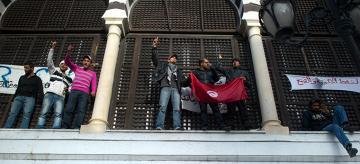Politics: The Americas
After years of dictatorships that ruled nearly every Latin American country during the 1970s, the region experienced a wave of democratization beginning in 1979.
After years of dictatorships that ruled nearly every Latin American country during the 1970s, the region experienced a wave of democratization beginning in 1979. Over the following decade, fifteen Latin American countries replaced dictatorships with democratic governments, many of which continue to thrive. But some countries in the region have gone the other way, with leaders cracking down on press freedom and locking up political opponents. And region-wide corruption scandals have left Latin Americans—who already face the world’s highest rates of violence and inequality—increasingly distrustful of the political establishment.
Threats of Democratic Backsliding in Latin America
The overwhelming majority of Latin American countries are democracies—a dramatic change from when dictators ruled the region. However, many of these democracies are fragile, and several are highly unfree or democratic in name only. The military is playing an increasingly influential role in countries like Brazil; generals compose almost half of former President Jair Bolsonaro’s cabinet. Other Latin American leaders—such as Venezuela’s President Nicolás Maduro—have suppressed political opposition, imprisoning dissidents, shutting down corruption investigations, and even killing protesters. Democratic checks on political power have also been challenged in Bolivia, where former President Evo Morales was accused of unfairly attempting to extend his presidency past term limits. Morales’ successor, former President Jeanine Áñez began serving a 10-year prison sentence in 2022 for unconstitutionally assuming the presidency, among other charges. Events like these have eroded public trust in political leadership and democratic institutions. The share of Latin Americans who trust political leaders averaged around 46 percent between 2008 and 2014. Since 2016, that number has dropped to just 34 percent.
Strong Civil Society Groups Energize Latin America’s Democracies
Despite challenges to Latin America’s democracies, the region boasts a strong civil society composed of individuals and groups outside the government and business sectors working to advance various economic, political, and social goals. Many such organizations gained strength in the 1980s following the downfall of the region’s dictatorships, which had previously persecuted any perceived challenge to their authority. Since the 1980s, Brazil’s Landless Workers Movement, which fights to redistribute agricultural land away from corporations to the country’s poor, has won nearly thirty thousand square miles of land—approximately the size of Belgium—back for small farmers who prove they can use it more effectively. In Argentina, activists helped bring down the country’s former military dictatorship in the 1980s and have since pushed their government to acknowledge human rights abuses and mass disappearances carried out during that time. Indigenous activism has also transformed countries like Bolivia and Ecuador. In 2005, indigenous groups helped elect Bolivia’s first indigenous president, Evo Morales, and successfully pushed for the country’s new constitution to recognize indigenous languages and the right of native people to administer their own land. But across the region, civil society members such as journalists, environmental activists, and human rights defenders—especially women—are targets for surveillance, repression, violence, and even murder.
Surveillance Technology Supports Region’s Governments
Despite Latin America’s strong civil society, governments frequently surveil activists, journalists, lawyers, and other perceived political opponents. Increasingly advanced technologies allow governments to eavesdrop on phone calls, read text messages, track an individual’s location, and record nearby conversations—all in total secrecy. Companies and government agencies in countries like China, Israel, Italy, Japan, and the United States are among the most notable suppliers of these technologies, which provide authorities with extensive powers to surveil and control their populations. For example, Chinese telecoms behemoth ZTE Corporation laid the technological groundwork for a Venezuelan ID card program rolled out in 2018 that stores sensitive information like medical history and political affiliations, sparking major concerns. Such technology has also been sold to countries like the Dominican Republic, Ecuador, and Panama—an especially worrying trend in countries with legacies of dictators using unchecked powers to violate the rights of their citizens.
Venezuela Falls From Economic Powerhouse to Failed State
Though today Venezuela is embroiled in a political, economic, and humanitarian crisis, the country used to be South and Central America’s wealthiest country, due in large part to its oil reserves—the world's largest. Home to the world’s largest known oil reserves, Venezuela was the region’s wealthiest country in the 1970s. However, growing unrest over inequality led to the 1998 election of socialist President Hugo Chávez. Chávez and his successor Nicolás Maduro—both authoritarian leaders—rolled back the country’s democratic institutions and used Venezuela’s oil-fueled wealth to fund clinics and food subsidies, while denying dissident citizens these services. These expensive policies, endemic government corruption, and overreliance on oil exports—the price of which crashed in 2014—led Venezuela’s economy to collapse. Maduro’s policies led to soaring inflation, severe food shortages, and a political crisis over Venezuela’s leadership. Western powers no longer recognize Maduro as the legitimate president of Venezuela. Though amid the political turbulence, Cuba and Russia have provided critical security support to the antidemocratic Maduro regime. As a result of the political, humanitarian, and economic crises, the country has become destabilized, and more than 7 million Venezuelans have been forced to flee since 2015. The international sanctions imposed on Venezuela in response to Maduro’s mismanagement have also contributed in some instances to food and medicine shortages. At the same time, Maduro had been accused of selectively distributing food and medicine to Venezuelans who voted for his party.
Corruption Runs Rampant in Latin America
Corruption is endemic in Latin America, hindering the region’s political development and undermining people’s trust in their institutions. Such abuse of power can take many forms: a 2019 report found that one in four citizens of Latin America was offered bribes in exchange for votes in 2018, while one in five people who accessed public services paid bribes to do so. As a result of this entrenched corruption in daily life, just under half of people in Latin America say they trust their governments, which the majority of citizens believe are run by private interests. Recently, however, several high-profile corruption scandals have spurred anticorruption movements across the region. In one of Latin America’s largest-ever corruption investigations, authorities arrested hundreds of business and political leaders connected to Odebrecht, a construction and engineering company accused of paying copious bribes in exchange for lucrative government contracts. This ongoing scandal has implicated politicians from Brazil, Colombia, Ecuador, El Salvador, Guatemala, Panama, and Peru and resulted in jail time for former Peruvian President Alejandro Toledo and former Ecuadorian Vice President Jorge Glas.
Gangs, Cartels Step In Where Latin American Leaders Fumble Pandemic Response
In 2020, several Latin American leaders refused or failed to implement meaningful public health responses to the COVID-19 crisis, further exacerbating public distrust of their political leadership and democratic institutions. Mexican President Andrés Manuel López Obrador organized political rallies and encouraged citizens to attend fiestas late into March, despite hundreds of confirmed cases. In Brazil, then President Jair Bolsonaro dismissed the deadly virus as a “measly cold” and fired his health minister who publicly defended lifesaving quarantine measures. In July, Bolsonaro tested positive for the virus. By September, Brazil had the third-largest COVID-19 outbreak in the world, behind the United States and India. In the absence of a strong government response, criminal elements sought to capitalize on the power vacuum and win public support. In Mexico, drug cartels distributed toilet paper and canned food in “Chapo packages,” named for the famed drug lord. In Brazil, gangs enforced social distancing in the densely populated slums known as favelas. Beyond Latin America, terrorist organizations such as Hezbollah and the Taliban sought to peel public support away from the government by handing out soap, promoting social distancing, and setting up COVID-19 response clinics.
Colombia’s Groundbreaking Peace Agreement Faces Challenges
In 2016, Latin America’s longest and deadliest conflict came to an end after fifty years, but today that fragile peace risks unraveling. The conflict dates back to 1960s Colombia, when the Revolutionary Armed Forces of Colombia (FARC)—a militant group comprising communists and peasants from poor rural areas—launched a guerrilla campaign aimed at overthrowing the government. Using kidnappings, extortion, and the cocaine trade to fund their activities, the FARC and other militias engaged in a conflict that killed approximately 220,000 people and displaced another 5.7 million. After a half century of fighting, a 2016 peace agreement disbanded the FARC in exchange for government investment in Colombia’s underdeveloped rural areas. But in 2018, newly elected President Iván Duque called for harsher punishments for former FARC fighters and defunded several rural development programs included in the peace accord. As a result, one FARC commander called for a return to war, claiming the government failed to uphold its end of the deal. While war has not yet returned, and left-wing former militant Gustavo Petro has since replaced Duque as president, a collapse of the peace agreement could once again destabilize an already fractured Colombia.
Mexico: A Microcosm of Latin America’s Violence Epidemic
Though home to just over 8 percent of the world’s population, Latin America accounts for nearly half of all homicides. More than 2.5 million people died from violence in Latin America between 2000 and 2017. In Mexico, the problem has become dramatically worse over the past decade. The murder rate increased by over 64 percent between 2014 and 2021, with over 34,000 homicides recorded in 2021. Acapulco—a Mexican city of fewer than a million people—had more murders in 2017 than Italy, the Netherlands, Portugal, Spain, and Switzerland combined. Mexico’s violence stems from organized crime and the drug trade and is exacerbated by easy access to guns from the United States. The government has responded by targeting cartel bosses, but that strategy has only caused these organizations to fragment into even more violent groups. What’s more, police in Mexico are in short supply, and the officers who serve have often been accused of corruption and human rights violations.
Undocumented Immigration at U.S.-Mexico Border Polarizes the United States
Although unauthorized immigration to the United States has mostly been on the decline since 2000, recent years have seen the issue explode into a humanitarian and political crisis. In 2023, millions of migrants were encountered (apprehended and/or expelled) at the border, with many coming from the Northern Triangle countries of El Salvador, Guatemala, and Honduras. Border facilities and courts have been overstretched and struggled to manage the arrival of those many migrants. Meanwhile, rights groups and media reports have highlighted abuses throughout the U.S. immigration system, including the forced separation of families and sexual violence in detention facilities. The issue carries such weight in U.S. politics that disagreement over former President Donald J. Trump’s plan and signature 2016 campaign promise to “build a wall” along the U.S.-Mexico border provoked a government shutdown in 2018. While politicians on both sides of the aisle agree the U.S. immigration system is inefficient, the political divide has prevented the U.S. Congress from cooperating to pass meaningful reforms. Nearly three million asylum cases were backlogged in 2023,up from one million in 2019—the majority of which concern Latin American migrants fleeing gang and drug violence.
United States Implements Disjointed Response to Pandemic
COVID-19 has killed nearly as many Americans as all wartime battles in the country's history. Why is it that the United States—home to just 4 percent of the world’s population—accounted for over 15 percent of all COVID-19 deaths in the first year and a half of the pandemic? A range of factors, including slow policy responses, shortages of diagnostic test kits, and inequities in the health-care system, explains the high death toll. Additionally, while many countries implemented comprehensive, nationwide public health systems, the United States had not. This disjointed structure results from the principle of federalism in the U.S. Constitution, which divides powers between the national (federal) government and the states. The framers of the Constitution envisioned federalism as a powerful check on the national government. But in times of pandemic, federalism has produced a dizzying patchwork of state-level approaches, with certain states enforcing strict quarantine measures while neighbors remain open for business, as the federal government has failed to coordinate a national response. In turn, COVID-19 spread across state lines as the government struggled to contain not one nationwide fire but rather fifty interconnected ones.
